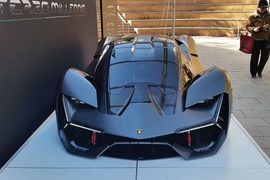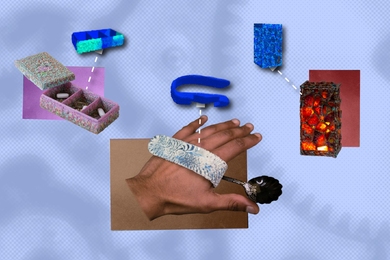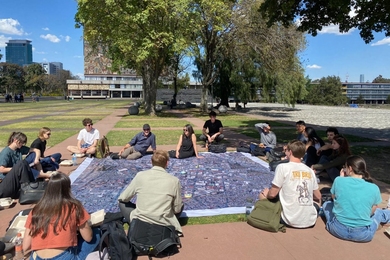Daniel Sperling is a distinguished professor of civil engineering and environmental science and policy at the University of California at Davis, where he is also founding director of the school’s Institute of Transportation Studies. Sperling, a member of the California Air Resources Board, recently gave a talk at MITEI detailing major technological and societal developments that have the potential to change transportation for the better — or worse. Following the event, Sperling spoke to MITEI about policy, science, and how to harness these change agents for the public good.
(Sperling's talk is also available as a podcast.)
Q: What are the downsides of the “car-centric monoculture,” as you put it, that we find ourselves living in?
A: Cars provide great value, which is why they are so popular. But too much of a good thing can be destructive. We’ve gone too far. We’ve created a transportation system made up of massive road systems and parking infrastructure that is incredibly expensive for travelers and for society to build and maintain. It is also very energy- and carbon-intensive, and disadvantages those unable to buy and drive cars.
Q: Can you tell me about the three transportation revolutions that you say are going to transform mobility over the next few decades?
A: The three revolutions are electrification, automation, and pooling. Electrification is already under way, with increasing numbers of pure battery electric vehicles, plug-in hybrid vehicles that combine batteries and combustion engines, and fuel cell electric vehicles that run on hydrogen. I currently own a hydrogen car (Toyota Mirai) and have owned two different battery electric cars (Nissan Leaf and Tesla).
A second revolution, automation, is not yet under way, at least in the form of driverless cars. But it is poised to be truly transformational and disruptive for many industries — including automakers, rental cars, infrastructure providers, and transit operators. While partially automated cars are already here, true transformations await fully driverless vehicles, which are not likely to exist in significant numbers for a decade or more.
Perhaps the most pivotal revolution, at least in terms of assuring that the automation revolution serves the public interest, is pooling, or sharing. Automation without pooling would lead to large increases in vehicle use. With pooling, though, automation would lead to reductions in vehicle use, but increases in mobility (passenger miles traveled) by mobility-disadvantaged travelers who are too poor or disabled to drive.
Q: You’ve mentioned that how these revolutions play out depends on which cost factor dominates — money or time. The result would either be heaven or hell for our environment and cities. Explain the nuances of that situation.
A: With pooled, automated and electric cars, the cost of travel would drop precipitously as a result of using cars intensively — spreading costs over 100,000 miles or more per year — having no driver costs, and having multiple riders share the cost. The monetary cost could be as little as 15 cents per mile, versus 60 cents per mile for an individually-owned automated car traveling 15,000 miles per year. The time cost of car occupants, on the other hand, is near zero because they don’t need to pay attention to driving. They can work, sleep, text, drink, and read. Thus, even if the cost of owning and operating the vehicle is substantial, the time savings would be so beneficial that many, perhaps most, would choose car ownership over subscribing to an on-demand service. In fact, most people in affluent countries would likely choose the huge time savings, worth $10, $20, or more per hour, over low travel costs. Thus, policy will be needed to assure that the public interest — environmental externalities, urban livability, access by the mobility disadvantaged — is favored over the gains of a minority of individuals.











